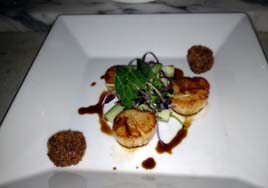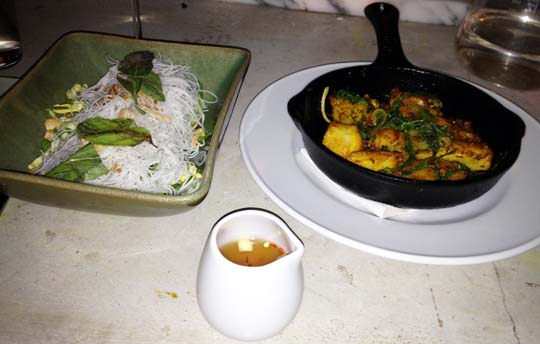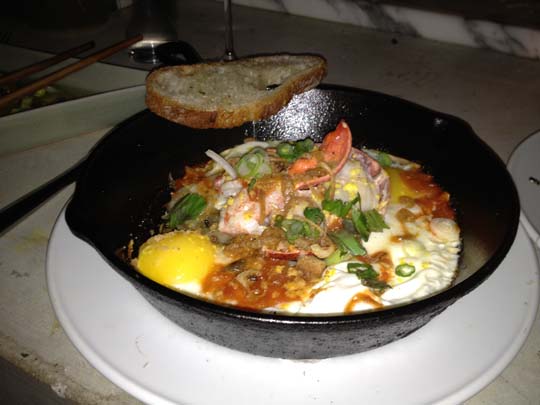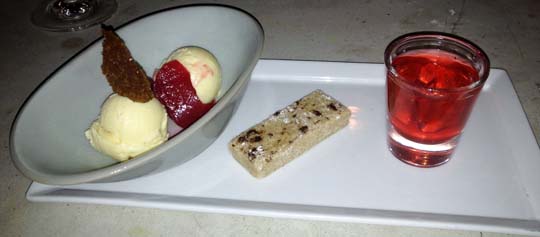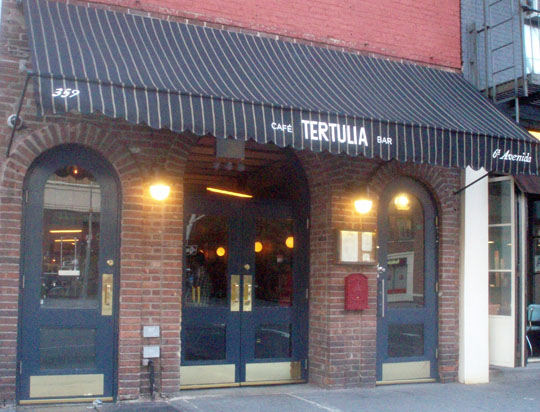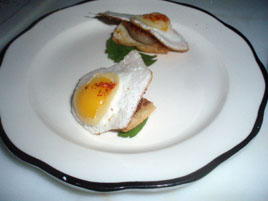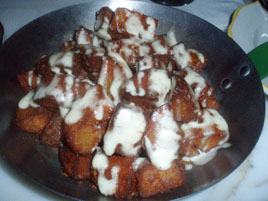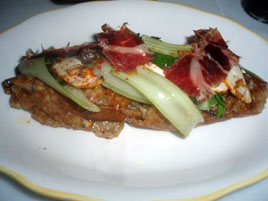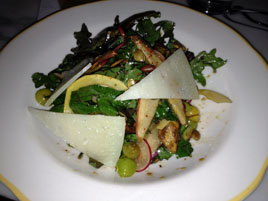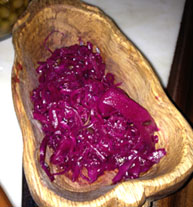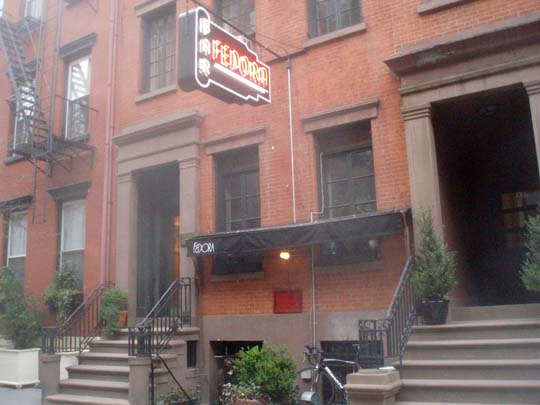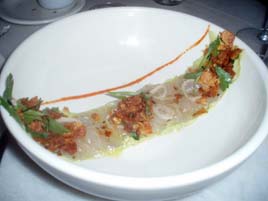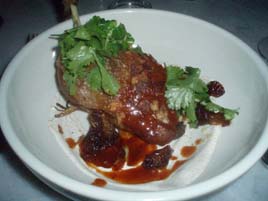Lowcountry
 Wednesday, February 22, 2012 at 03:47PM
Wednesday, February 22, 2012 at 03:47PM 
Note: Lowcountry closed. The space is now called Louro, under the same ownership, with chef David Santos.
*
Whenever there’s a chef change at a restaurant I’ve reviewed, I always make a note of it. I might not get around to a re-review, but at least it remains in the back of my mind.
I did make it back to Lowcountry, which has a new chef, Oliver Gift, as of January 2012. Much of the background of the restaurant remains the same, so I refer you to my October 2010 review for details.
The cuisine is still Southern U.S., but with more traditional menu headings: appetizers and mains, rather than the irritating “small” plates and “large.” Prices have crept up: whereas entrées were formerly $19–23, they’re now $19–30, with an average around $25. Some former apps are now served as larger and more expensive mains, but Lowcountry remains a low-to-mid-priced restaurant by today’s standards.

We thought the Lowcountry Sampler ($16; above) would be a good way to sample the appetizers. You get two bacon deviled eggs, two mini crab cakes, a bit of Benton’s country ham, and a scoop of leek dip with house-made chips. It is all unobjectionable, but equally unimpressive.


Last time, Shrimp & Grits with Andouille Sausage (above left) was a $14 appetizer; it’s now a $20 entrée. But what it seems to have gained is a bowl full of soupy grits that overwhelmed the shrimp and sausage.
Arctic Char ($24; above right) was considerably better, despite an overly precious plating that is really out of place for the restaurant. Char is a delicate fish, and the kitchen has mastered it, served on a bed of red quinoa.
In keeping with the Southern theme, there is an extensive bourbon list. We had a couple of bourbon-based cocktails that were strictly of the backyard barbecue variety, the sorts of unstudious drinks you wouldn’t mind if a buddy served them on the back porch.
The restaurant was not doing much business on a Sunday evening; I have no idea if that is typical. Service was fine, as you’d expect under those circumstances. The new chef has worked at some impressive places (Commerce, Blue Hill at Stone Barns), so I thought he might have plans to elevate the cuisine. He may yet, but so far that is not the case.
Lowcountry (142 W. 10th Street between 6th & 7th Avenues, West Village)
Food: *
Service: *
Ambiance: *
Overall: *






